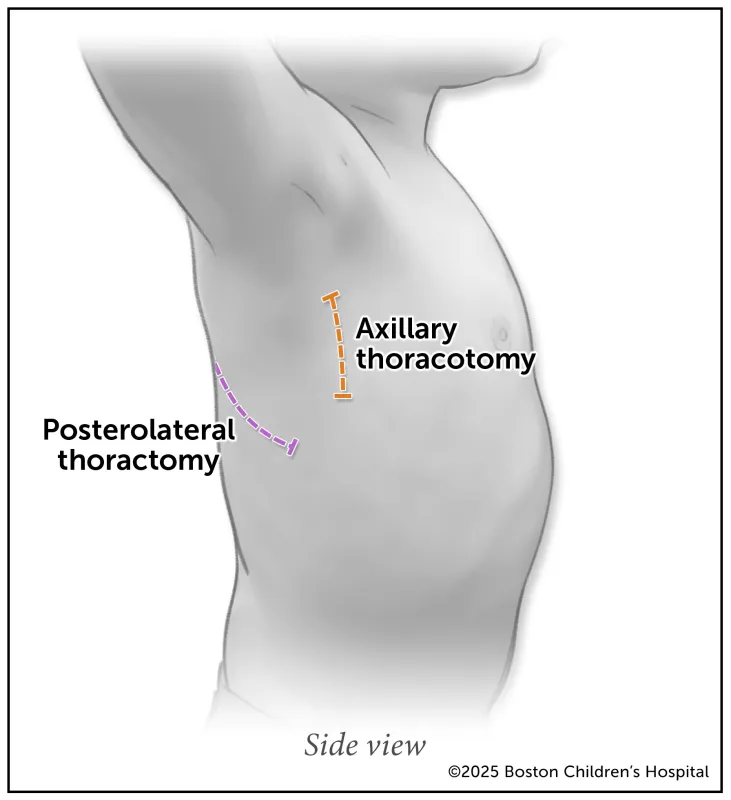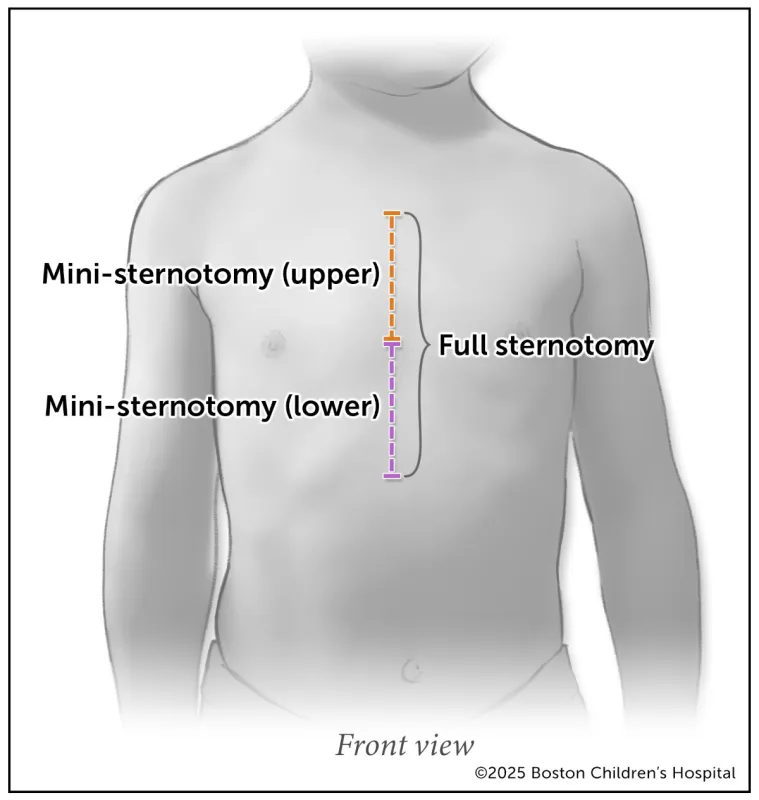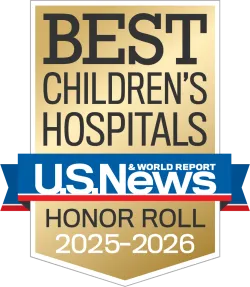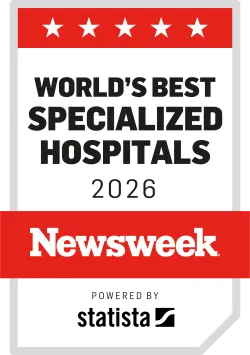The axillary and posterolateral are two ways to perform a minimally invasive thoracotomy and repair certain heart defects.
Breadcrumb
- Home
- Conditions & Treatments
- Minimally Invasive Cardiac Surgery
When our heart specialists at Boston Children’s plan surgery, recovery is always a top priority. We want children to experience as little discomfort as possible after an operation and be in the best position to heal quickly.
Minimally invasive cardiac surgery accelerates recovery by using small incisions to access and treat the heart. It reduces pain and shortens recovery. We are one of the few pediatric hospitals to offer minimally invasive cardiac surgery — including an approach known as a thoracotomy — to treat congenital heart defects (CHDs). With our cardiac surgeons, cardiologists, and pain management specialists involved in the entire process, we consistently help children get better so they can enjoy and make the most of family activities, school, sports, and hobbies.
Which conditions are treated with minimally invasive heart surgery?
Conditions that can be treated with this approach include:
- Atrial septal defect
- Ventricular septal defect
- Complete AV canal defects
- Tetralogy of Fallot (for some patients)
- Vascular rings such as right aortic arch with aberrant left subclavian, or double aortic arch
Deciding which minimally invasive surgery is best for your child
Our Cardiac Surgery team at Boston Children’s Benderson Family Heart Center will review all surgical treatment options with your family. If your child is a candidate for minimally invasive cardiac surgery, we will fully explain the approach we recommend and how it works.
No matter what your decision is, your family will have all the time and resources you need to think it over. We are always available to answer any questions. Your family is an important part of your child’s care team, and you will have our full support.
How is minimally invasive cardiac surgery performed?
Heart surgery is usually performed using an approach known as a sternotomy. Surgeons access the heart through the sternum (breastbone). Sometimes, the thymus gland has to be removed to improve access. After the ASD is repaired, the sternum has to be wired together to help the bone heal, which can take up to three months. Immediately after surgery, recovery in the hospital can take four to five days. A sternotomy also leaves a visible incision scar on the upper chest.
Because of our commitment to provide many surgical options to families, we are able to treat some patients with one of two surgical approaches that avoid certain aspects of a sternotomy and are less invasive: a thoracotomy and a mini-sternotomy.
Thoracotomy
Boston Children’s is one of a few pediatric hospitals to offer a thoracotomy. Instead of accessing the heart through the sternum, our surgeons make a smaller incision under the armpit. Also, the thymus doesn’t need to be removed.
If your child has a thoracotomy, they will experience less pain than they would after a sternotomy. Their recovery time in the hospital could also be shorter: possibly two to three days. Because your child will be able to heal quickly, they should be able to resume physical activities and contact sports as soon as possible after surgery. And their incision scar will be smaller and less visible.

Mini-sternotomy
If your child is not eligible for a thoracotomy, they might be a candidate for a mini-sternotomy, which is a less invasive approach than a full sternotomy. A mini-sternotomy requires a smaller chest incision and only a partial splitting of the sternum, either the upper or lower portion. It leaves a small incision scar on the chest and is less painful after surgery, possibly allowing your child to leave the hospital in two to three days and recover faster.

A mini-sternotomy on either the upper or lower half of the sternum makes a smaller surgical incision than a full sternotomy does.
Watch our webinar: Minimally invasive approach to ASD repair
Using advanced surgical techniques, Boston Children’s offers multiple treatment options for ASD, including a minimally invasive thoracotomy approach. In this webinar, we discuss what ASD is, when it can be closed in the catheterization lab, and the different surgical options available.
Recovery from minimally invasive cardiac surgery
Our work to ensure your child recovers quickly starts before the procedure itself, as we incorporate recovery into how we plan the operation. That planning may include our colleagues from the Enhanced Recovery After Cardiac Surgery (or ERAS Cardiac) Program. Together, we will focus on components of care that maximize safety, minimize pain, and shorten the length of stay at the hospital. When your child goes home, our team will follow your child’s progress and heart health into adulthood.





